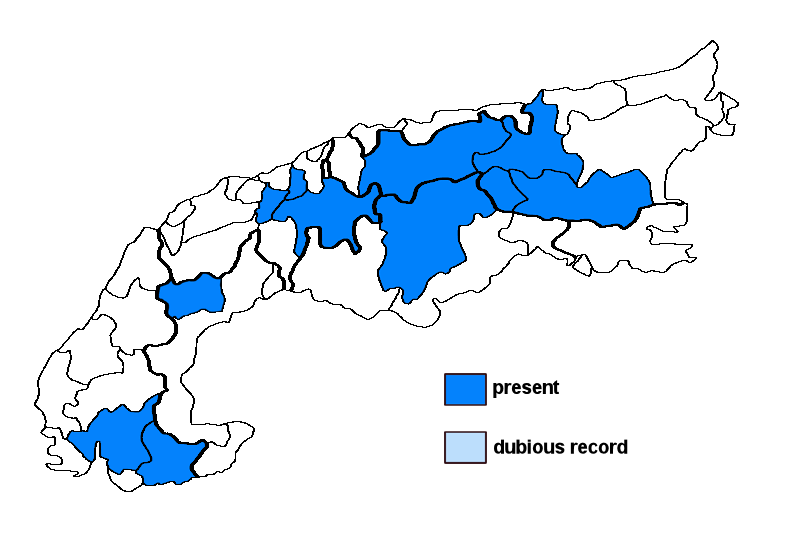Physcia phaea (Tuck.) J.W. Thomson
Syn.: Parmelia phaea Tuck., Physcia aipolia (Ehrh. ex Humb.) Fürnr. subsp. phaea (Tuck.) Clauzade & Cl. Roux, Physcia melops Dufour ex Nyl.
Lichenised.
Substrate: intermediate rocks (such as calciferous schists)
Altitudinal range: from the subalpine belt (potential vegetation: open, taiga-like forests dominated by Larix decidua and/or Pinus cembra and Rhododendron) to the nival belt (above the lower limit of perennial snow and glaciers)
Note: an arctic-alpine to boreal-montane, circumpolar lichen related to Ph. aipolia, found on siliceous rocks slightly manured by birds, with optimum above treeline, up to the nival belt in the Alps, where it is generally not common.
Austria: Tirol; Salzburg; Kärnten; Switzerland: Glarus; Graubünden; Uri; France: Alpes-de-Haute-Provence; Alpes-Maritimes; Italy: Trentino Alto Adige; Valle d'Aosta;





